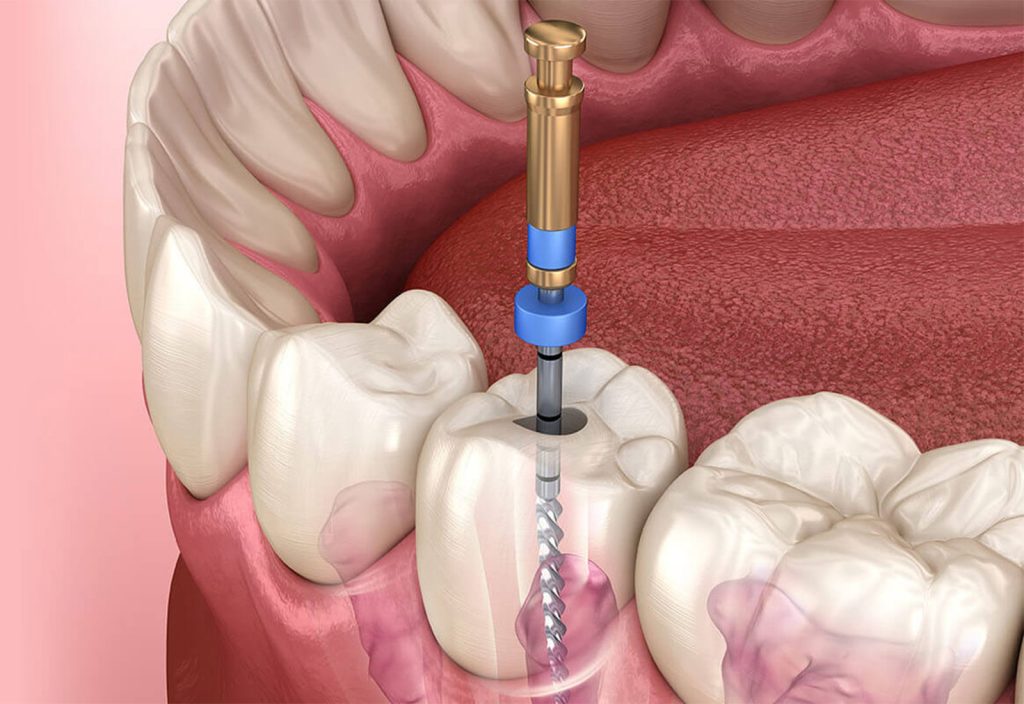Root canal treatment is a treatment that aims to preserve a tooth by removing infected or damaged tissue from the inside of the tooth and filling the root canals. However, in some cases, the initial root canal treatment may not produce the desired results, or the tooth may develop problems again. In such cases, a root canal retreatment is the preferred method. So, what is a root canal retreatment, when is it necessary, and how is it performed?
What is Root Canal Renewal?
A root canal is the process of re-treating a tooth that has previously undergone root canal treatment. The filling materials used in the initial treatment are removed, the root canal system is cleaned again, and the root canal is refilled.
- This procedure may be performed because the canal has not been cleaned sufficiently, the infection has not healed completely, or a new infection has developed over time.
- The restoration procedure is usually performed using a microscope, which allows for a clearer view of the root canal system and increases the success rate.
In short, root canal treatment is a second chance to save the tooth from extraction.
In Which Cases Is Root Canal Treatment Re-Needed?
Although not every tooth that has undergone root canal treatment requires replacement, re-treatment may be necessary in certain situations:
- Persistence of pain and tenderness: If tooth pain, discomfort while chewing, or sensitivity to hot and cold persists even after a long period of time following root canal treatment, a replacement may be necessary.
- Recurrence of infection: Gum swelling, abscess, or fistula formation indicates ongoing infection. In these cases, root canal treatment must be repeated.
- Inadequate initial treatment: The canals may not have been completely cleaned or filled during the initial root canal treatment, necessitating a repeat treatment.
- Formation of new caries: If a tooth with root canal treatment develops decay, bacteria can reach the canals again.
- Fractures or cracks: Dişte sonradan gelişen çatlaklar da kanal sisteminin tekrar enfekte olmasına yol açabilir.
In such cases, the dentist may decide to re-do root canal treatment. The goal is to eliminate the infection and preserve the tooth in good health for many years to come.
How is Root Canal Renewal Done?
Root canal renewal proceeds similarly to conventional root canal treatment, but it is a more detailed and delicate process.
- Removal of old fillings: In the first stage, the old root canal filling and any restorations (fillings or crowns) placed on the tooth are removed.
- Accessing the channel system: Root canals are examined in detail using a microscope. Hidden or previously unnoticed canals can be identified.
- Cleaning and disinfection: The canals are cleaned again using special tools and solutions. This step is critical for completely eliminating the infection.
- Refilling of channels: The cleaned canals are refilled with biocompatible materials.
- Restoration of the tooth: In the final stage, a filling or coating is made in accordance with the structure of the tooth.
The length of time the restoration takes can vary depending on the condition of the tooth and the extent of the infection. In some cases, it can be completed in a single appointment, while in others, multiple appointments may be required.
Root canal re-treatment is the repetition of unsuccessful or problematic root canal treatments and is an important treatment option for retaining a tooth without extraction. It can be performed for reasons such as pain, infection, inadequate initial treatment, or new decay. Microscope-assisted methods have increased the success rate, and with proper planning, long-lasting results can be achieved.
This text is intended to provide general information. The appropriate treatment method for each patient may vary, and therefore, a dentist who is an expert in the field should be consulted. Before making any decision regarding dental health, it is of great importance that you have a detailed examination and consultation with your physician. These articles are for informational purposes only and are not intended to replace professional medical advice.



 by
by